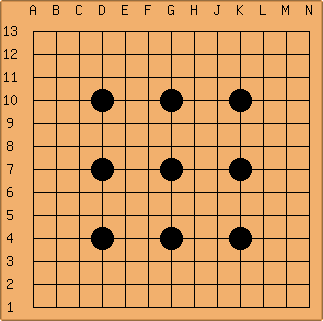How should ko be pluralised?
- ko
- kos
- koes
- ko’s
- kohs
- ko / another option depending on how important the plurality information is
- other
0 voters
How should ko be pluralised?
0 voters
Although I also do “kos”.
I usually write ko, but I’ll sometimes say kos if I think the distinction is important and not already expressed in the sentence.
I’m the same way with other Japanese terms: no pluralisation if it doesn’t really matter, and if does matter I just add an s.
Here’s another in the same vein:
0 voters
0 voters
Example just sighted in the wild:

I think an is used especially often before history and related words.
Proposition: always write an and let the speaker decide if they want to pronounce the n or not. Other graphic variants: ã, a^n, a’ or simply a.
To whom do you make this proposition?
The English language doesn’t have a language academy (a body that regulates a standard language). The Oxford English Dictionary is the principal historical dictionary of the English language.
And slowly this thread is drifting towards the Language Learners Library.
It seems to be sarcasm. Don’t take it too seriously.
Like, if I said:
Proposition: since people call cucumbers “cukes”, let’s call zucchinis “zukes”
I hope no one would imagine that I’m thinking of petitioning the OED or starting a grassroots linguistic movement, but rather just making a joke.
Honi soit qui mal y pense.
Don’t take yourself too seriously.
0 voters
Too little and too much 
More precisely, I think that the issue rarely is the number of cuts, but knowing when and where and how to cut 
See, in my experience DDKs very rarely cut.
This drives the second issue, which is the common instance of one player leaving three or four cuts in their shape – if your opponents never take them, of course you won’t learnt to fix.
You may very well be right (especially because at that level, not cutting when you should is probably more costly than cutting when you shouldn’t).
An interesting handicap-variant is to forbid white from making a cross-cut shape. (white can’t make the last cutting move, it’s fine if black makes the cutting move)
This is actually huge if black knows how to use it (just hane everything!)
(since the general trend on the forums seems to be that every thread ends up talking about linguistics, I might make it my thing to always find a way to talk about variants  )
)
Where should handicap stones be placed on 13x13?
On the fourth line, like this?

Or on the third, like this?

I certainly agree with willemien on SL that the latter placement is harder for White to play against. I find the first one more aesthetically pleasant, though. The GTP standard defines their placement as being on the fourth line.
On the matter of aesthetics, I don’t think a tengen stone looks good on a board this small. Better to have an eight-stone handicap making a box on the fourth-line hoshi, imo.
0 voters
Damn, this poll would’ve been better in the 13x13 thread. Ah well.
True, but you can still do that.
Or make a new post -  -where you compare/discuss the third/fourth line placement of the handicap stones for all board sizes.
-where you compare/discuss the third/fourth line placement of the handicap stones for all board sizes.
Why not just use free placement?
0 voters
I’d guess truthfully it would be somewhere in between those two… Also depends on what the word after it is.